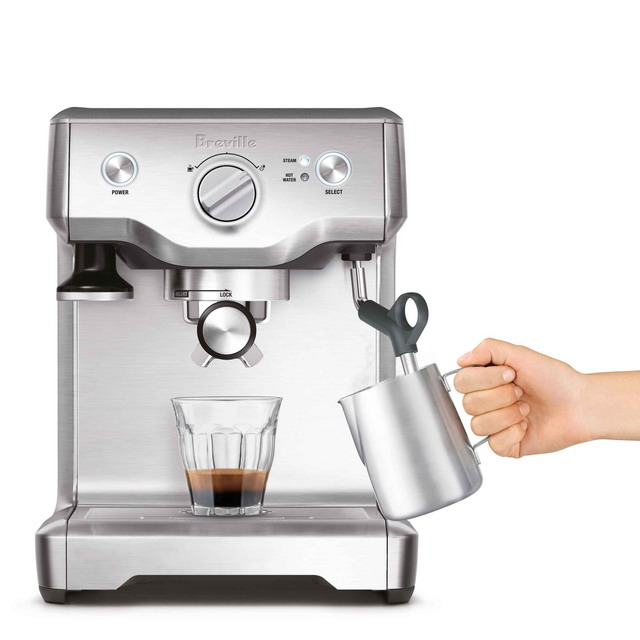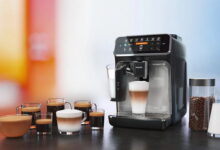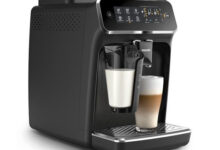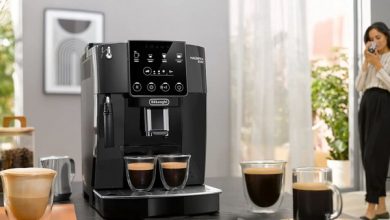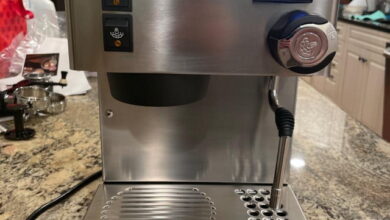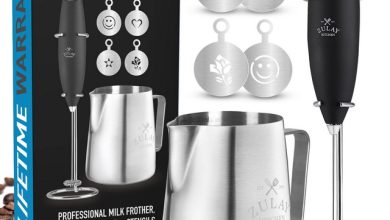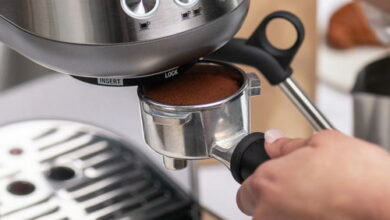In recent years, the art of home brewing has surged in popularity, with more coffee enthusiasts ditching their daily café runs in favor of crafting the perfect cup in the comfort of their own kitchens. Among the various home espresso machines on the market, Breville stands out as a preferred brand, capturing the hearts of both amateur and seasoned baristas. With its blend of innovative technology and user-friendly design, Breville has made it easier than ever to create café-quality espresso at home.
As a long-time coffee lover and journalist, exploring the world of home espresso machines has been a fascinating experience. Writing this blog post allowed me to delve into the intricacies of espresso brewing and understand why Breville remains a top choice for many. The brand’s commitment to quality and ease of use resonates with those who seek to elevate their coffee-making experience without the steep learning curve. Through research and personal trials, I’ve come to appreciate how Breville transforms the mundane task of making coffee into a delightful ritual, one perfect shot at a time.
Why Choose a Breville Espresso Coffee Machine?
- Reputation and Reliability of the Breville Brand
Breville has established itself as a leading name in the world of kitchen appliances, known for its commitment to quality and innovation. Founded in Sydney, Australia, in 1932, Breville has consistently delivered products that combine functionality with style. The brand’s reputation is built on its dedication to engineering excellence, ensuring that each espresso machine is crafted to the highest standards. Breville’s focus on customer satisfaction and product reliability has earned it a loyal customer base and numerous industry awards.
- Innovative Features and Design
Breville espresso machines are renowned for their innovative features and sleek design. The brand continuously incorporates cutting-edge technology to enhance the user experience. Some standout features include:
- ThermoJet Heating System: This technology allows the machine to heat up and be ready to brew in just three seconds, making it one of the fastest on the market.
- PID Temperature Control: Ensures precise temperature regulation for optimal espresso extraction.
- Integrated Conical Burr Grinder: Provides freshly ground coffee with adjustable grind settings for customized brews.
- Low-Pressure Pre-Infusion: Gradually increases water pressure to gently expand coffee grinds for even extraction.
- Hands-Free Operation: Many models offer automated or semi-automated processes, reducing the effort required to make a perfect cup of espresso.
Breville’s attention to detail in both functionality and aesthetics makes their machines a stylish addition to any kitchen, appealing to both amateur and professional baristas.
- Versatility and Range
Breville offers a wide range of espresso machines to cater to different needs and preferences. Whether you’re a beginner looking for an easy-to-use machine or a seasoned barista wanting full control over your brew, Breville has an option for you. Their product line includes:
- Entry-Level Machines: Such as the Bambino Plus, perfect for those new to espresso making, offering simplicity without compromising on quality.
- Mid-Range Models: Like the Barista Express, which includes a built-in grinder and offers a balance of manual and automatic features.
- High-End Machines: Such as the Oracle Touch, which provides professional-grade performance with fully automated features, including grinding, dosing, and milk texturing.
Breville’s machines are designed to accommodate various brewing methods, from single and double shots to frothing milk for cappuccinos and lattes. This versatility ensures that you can enjoy a wide variety of coffee drinks, all made to perfection.
Key Features of Breville Espresso Coffee Machines
Durable Build and Design
Breville espresso coffee machines are renowned for their robust and durable construction. Crafted from high-quality materials such as stainless steel, these machines are built to withstand daily use while maintaining their performance and appearance. The sleek and modern design of Breville machines not only adds a touch of elegance to any kitchen but also ensures longevity and reliability.
Advanced Brewing Technology
One of the standout features of Breville espresso coffee machines is their advanced brewing technology. The PID temperature control system ensures precise temperature management throughout the brewing process, leading to consistent and optimal extraction. Additionally, the integrated pressure gauge provides real-time feedback on the pressure applied during extraction, while the pre-infusion function gently wets the coffee grounds before the full extraction process, resulting in a more even and flavorful shot of espresso.
User-Friendly Interface
Breville machines are designed with the user in mind, featuring intuitive controls and displays that make the brewing process straightforward and enjoyable. The user-friendly interface includes clear and easy-to-read LCD screens, along with simple button layouts that guide users through each step of making their perfect cup of coffee. Many models also come with programmable settings, allowing users to customize their brew strength, temperature, and shot volume to suit their preferences.
Milk Frothing Capabilities
For those who enjoy milk-based espresso drinks, Breville machines offer exceptional milk frothing capabilities. The steam wand is designed to produce micro-foam milk texturing, which is essential for creating lattes, cappuccinos, and other specialty drinks with a professional-quality finish. The powerful steam wand provides ample steam pressure to froth milk to the desired consistency, enhancing the overall coffee experience.
Maintenance and Cleaning
Maintaining a Breville espresso coffee machine is a breeze, thanks to its user-friendly cleaning and maintenance features. Many models include removable drip trays, water tanks, and brewing components that are easy to clean. Additionally, Breville machines often come with cleaning alerts and reminders to descale the machine, ensuring that it continues to operate efficiently and produce great-tasting coffee over time. The ease of cleaning and maintenance not only prolongs the machine’s lifespan but also ensures a consistently high-quality coffee experience.
Different Models of Breville Espresso Machines
When I first delved into the world of Breville espresso machines, I was amazed by the variety and sophistication of their offerings. Each model seemed to cater to a unique set of needs and preferences, making it clear that Breville had thoughtfully designed their machines to suit different types of coffee enthusiasts.
Breville Barista Express: This model is a fantastic entry point for those new to home espresso making. Its built-in conical burr grinder and easy-to-use steam wand make it an all-in-one solution for crafting your favorite coffee drinks. With features like a dose-control grinding and a precise espresso extraction system, it’s ideal for anyone who wants to enjoy a café-quality espresso at home without diving too deep into the technicalities.
Breville Barista Pro: As I explored the Barista Pro, I noticed its advanced features, such as the intuitive LCD interface that provides real-time feedback and faster heat-up time. It’s a step up from the Barista Express, offering more control over the brewing process and a quicker path to your morning espresso. The Pro is perfect for users who have some experience with espresso machines and are looking to refine their barista skills.
Breville Barista Touch: The Barista Touch stood out with its innovative touchscreen interface, which simplifies the espresso-making process even further. With automated settings for grinding, brewing, and milk texturing, it’s designed for those who appreciate convenience and consistency. The ability to save personalized coffee settings makes it a great choice for households with multiple coffee drinkers, each with their own preferences.
Breville Bambino Plus: Compact and efficient, the Bambino Plus is ideal for those with limited counter space but a strong desire for high-quality espresso. Despite its small size, it doesn’t compromise on performance, offering features like an automatic steam wand for perfectly textured milk. This model is perfect for urban dwellers or anyone looking to maximize their kitchen space without sacrificing their coffee experience.
Breville Dual Boiler: The highlight of the Dual Boiler model is its dual boiler system, allowing simultaneous brewing and steaming. This feature is a game-changer for serious coffee aficionados who want to perfect their espresso and milk-based drinks. By maintaining optimal temperature control, it ensures that both processes are executed flawlessly, making it an excellent choice for advanced users who demand precision and efficiency.
How to Use a Breville Espresso Machine
Making a perfect cup of espresso at home can be a delightful experience, and the Breville espresso machine is designed to help you achieve just that. Whether you’re a seasoned barista or a coffee enthusiast, this guide will take you through the essential steps to set up, use, and maintain your Breville espresso machine. I recently had the pleasure of testing out a Breville myself, and the process was both educational and enjoyable. Here’s how you can get started with your own machine.
Setting Up
Step-by-Step Guide on Setup:
- Unboxing and Placement: Start by carefully unboxing your Breville espresso machine. Place it on a stable, flat surface near an electrical outlet.
- Water Reservoir: Fill the water reservoir with fresh, cold water. Ensure it is properly seated back in its place.
- Powering Up: Plug in the machine and turn it on. Allow it to heat up for about 10-15 minutes.
- Flushing the Machine: Before your first use, run water through the machine without coffee grounds to clean out any residues from the manufacturing process.
Tips for the First Use:
- Read the Manual: The manual contains specific instructions and safety warnings that are crucial for the first-time setup.
- Use Fresh Beans: Start with fresh, high-quality coffee beans for the best flavor.
Grinding and Dosing
Importance of Grind Size and Dosing:
The grind size and the amount of coffee you use (dosing) are critical for a perfect espresso. A finer grind ensures a slow extraction, allowing for rich flavors, while a coarser grind can lead to a faster, weaker extraction.
Using the Built-In Grinder (if applicable):
- Adjust Grind Size: Set the grind size on the built-in grinder to fine. Experiment with different settings to find your preferred taste.
- Dosing: Measure out the correct amount of coffee grounds (typically around 18-20 grams for a double shot). The Breville grinder usually comes with a dose control feature to make this easier.
Tamping and Brewing
Proper Tamping Technique:
Tamping compresses the coffee grounds to ensure even water flow during extraction. Here’s how to do it:
- Distribute Grounds Evenly: After dosing, tap the portafilter gently to settle the grounds.
- Apply Even Pressure: Use a tamper to press the grounds evenly. Apply firm pressure (around 30 pounds), ensuring the surface is level.
Brewing Process and Tips for Perfect Extraction:
- Lock the Portafilter: Insert and lock the portafilter into the group head.
- Start Brewing: Press the brew button. Aim for an extraction time of 25-30 seconds for a double shot.
- Adjust if Necessary: If the shot is too fast or slow, adjust the grind size or dosing accordingly.
Frothing Milk
How to Use the Steam Wand:
- Purge the Wand: Before frothing, purge the steam wand to eliminate any residual water.
- Positioning: Submerge the tip of the steam wand just below the surface of the milk.
- Frothing: Turn on the steam. As the milk expands, gradually lower the pitcher to keep the tip just below the surface, creating microfoam.
Tips for Achieving the Perfect Milk Froth:
- Use Cold Milk: Cold milk froths better. Whole milk gives a creamier texture, while skim milk produces more foam.
- Angle and Depth: Maintain a slight angle in the pitcher and ensure the wand is not too deep to avoid large bubbles.
Cleaning and Maintenance
Daily and Periodic Cleaning Routines:
- Daily: Clean the portafilter, basket, and steam wand after each use. Wipe down the machine and empty the drip tray.
- Weekly: Remove and clean the shower screen and gasket. Soak the portafilter and basket in hot water.
Descaling Instructions:
- Descaling Solution: Mix a descaling solution according to the manufacturer’s instructions.
- Run Through Machine: Run the solution through the machine, following with fresh water to rinse thoroughly.
- Frequency: Descale every 2-3 months, depending on water hardness.
Tips for Making the Perfect Espresso
When it comes to crafting the perfect espresso, the journey is as exciting as the destination. From selecting the freshest beans to experimenting with various recipes, every step contributes to that rich, flavorful shot that delights your taste buds. Here are five essential tips to help you make the perfect espresso.
1. The Importance of Fresh Beans
The foundation of a great espresso lies in the quality of the beans. Freshness is paramount. Coffee beans start to lose their flavor and aroma shortly after roasting, so it’s crucial to use beans that are as fresh as possible. Ideally, you should use beans within two to three weeks of their roast date. Investing in a good coffee grinder can make a significant difference, allowing you to grind your beans just before brewing to maximize freshness and flavor.
2. Optimal Grind Size
The grind size plays a critical role in the espresso-making process. If the grind is too coarse, the water will pass through too quickly, resulting in a weak and under-extracted espresso. Conversely, if the grind is too fine, the water will take too long to pass through, leading to an over-extracted and bitter espresso. Aim for a fine grind that feels similar to granulated sugar. Adjusting the grind size based on your machine and taste preferences can help you achieve the perfect shot.
3. Correct Tamping Pressure
Tamping the coffee grounds correctly is another key element. Tamping ensures that the grounds are evenly compressed, providing resistance to the water and allowing for a uniform extraction. The ideal pressure is about 30 pounds of force. Too little pressure can result in an uneven extraction, while too much can prevent water from flowing through the grounds properly. Practice and consistency are crucial here; over time, you’ll develop a feel for the right pressure.
4. Ideal Brewing Temperature and Time
The brewing temperature and time significantly impact the flavor profile of your espresso. The ideal water temperature is between 195°F and 205°F. Water that is too hot can scorch the coffee, while water that is too cold can result in a sour and under-extracted shot. The optimal brewing time is typically around 25 to 30 seconds. This allows for a balanced extraction, capturing the full range of flavors from the coffee grounds. Experimenting with slight adjustments to temperature and time can help you find the sweet spot for your espresso.
5. Experimenting with Different Beans and Recipes
Finally, don’t be afraid to experiment with different beans and recipes. Coffee is a versatile and diverse ingredient, with each variety offering unique flavors and characteristics. Try beans from different regions, roast levels, and blends to discover what you enjoy most. Experimenting with different recipes, such as altering the coffee-to-water ratio or trying new brewing methods, can also lead to delightful new experiences and flavors.
Troubleshooting Common Issues with Espresso
Espresso is an art form, a ritual cherished by coffee lovers around the world. However, even the most seasoned barista can encounter hiccups that turn a potentially perfect cup of espresso into a disappointing experience. In this guide, we’ll explore some common issues that can arise when making espresso, along with practical solutions to help you achieve that elusive perfect shot every time.
Bitter or Sour Espresso: Finding the Balance
One of the most common complaints about homemade espresso is that it tastes either too bitter or too sour. These unpleasant flavors can be the result of several factors, but with a little tweaking, you can often find the perfect balance.
Possible Causes and Solutions:
- Grind Size: The grind size of your coffee beans is crucial. If your espresso tastes bitter, it might be because the grind is too fine, causing over-extraction. Conversely, if it tastes sour, the grind might be too coarse, leading to under-extraction. Adjusting the grind size can help you find the sweet spot.
- Extraction Time: Over-extraction (too long) or under-extraction (too short) can also affect the taste. Aim for an extraction time of around 25-30 seconds. Experiment within this range to find what works best with your beans and machine.
- Water Temperature: Water that is too hot can extract more bitter compounds, while cooler water might not extract enough flavor. Ensure your machine heats the water to around 195-205°F (90-96°C).
Weak or Watery Espresso: Boosting Flavor and Strength
A weak or watery espresso can be equally frustrating, especially when you’re craving that robust, concentrated shot of coffee. Several factors can contribute to this issue, but a few adjustments can significantly improve your extraction.
Adjustments to Improve Extraction:
- Tamp Pressure: Ensure you are applying consistent pressure when tamping the coffee grounds. A light tamp can lead to uneven extraction, while a too-heavy tamp might restrict water flow.
- Coffee Dose: The amount of coffee used for a single shot should be about 18-20 grams. Too little coffee can result in a weak shot, while too much can cause over-extraction and bitterness.
- Pre-Infusion: Some espresso machines have a pre-infusion feature that wets the coffee grounds before full extraction, promoting even extraction and better flavor. If your machine has this feature, try using it to improve your espresso’s strength and body.
Steam Wand Issues: Mastering Milk Frothing
A perfectly frothed milk can elevate your espresso experience, whether you’re making a cappuccino, latte, or macchiato. However, issues with the steam wand can quickly derail your efforts.
Common Problems and Fixes:
- No Steam: If your steam wand isn’t producing steam, ensure the machine is adequately heated and that the steam function is activated. Check for blockages in the wand tip and clean it thoroughly.
- Weak Steam Pressure: Low steam pressure can result from mineral buildup within the machine. Regular descaling can help maintain optimal pressure.
- Milk Not Frothing Properly: If your milk isn’t frothing correctly, consider the type of milk you’re using. Whole milk froths better than skim milk due to its higher fat content. Additionally, ensure you are positioning the steam wand just below the surface of the milk to introduce the right amount of air.
Maintenance Problems: Keeping Your Machine in Top Shape
Regular maintenance is key to keeping your espresso machine running smoothly and ensuring consistently great coffee. Neglecting maintenance can lead to various problems that affect your espresso’s quality.
How to Handle Common Maintenance Issues:
- Descaling: Mineral deposits from water can build up inside your machine, affecting water flow and temperature. Regular descaling, using a descaling solution or a mixture of water and vinegar, can prevent this buildup.
- Cleaning the Group Head: The group head, where the coffee is brewed, should be cleaned regularly to remove coffee oil and residue. Use a brush or a specialized cleaning solution for this task.
- Replacing Seals and Gaskets: Over time, the seals and gaskets in your machine can wear out, leading to leaks or pressure issues. Check these components regularly and replace them as needed.
- Backflushing: Some espresso machines have a backflushing feature to clean the internal components. Use this feature periodically to ensure your machine remains in good working order.
Comparing Breville to Other Brands
When it comes to espresso machines, Breville has made a significant mark in the industry, often compared to other renowned brands like DeLonghi, Gaggia, and Rancilio. As a long-time coffee enthusiast and writer, I have had the pleasure of exploring various models from these brands, each offering unique features and benefits.
Breville machines are celebrated for their user-friendly interfaces, sleek designs, and advanced technology. Features such as the intuitive touchscreens, precise temperature control, and customizable settings make Breville stand out. However, when juxtaposed with DeLonghi, Gaggia, and Rancilio, the differences become more nuanced. DeLonghi, for instance, is known for its durability and reliability, often catering to users who prioritize longevity and robust build quality. Gaggia, with its deep-rooted Italian heritage, excels in delivering authentic espresso experiences, thanks to its commercial-grade components. Rancilio, on the other hand, is often favored by professional baristas for its superior performance and consistency.
In terms of pricing, Breville tends to position itself in the mid-to-high range, offering a balance between affordability and premium features. DeLonghi and Gaggia offer a wider spectrum, from budget-friendly options to high-end machines, catering to various consumer segments. Rancilio, typically more expensive, justifies its pricing with exceptional performance and build quality.
When evaluating value for money, Breville holds its ground firmly, particularly for home users seeking convenience without compromising on quality. Customer satisfaction ratings for Breville are generally high, with users praising its ease of use and consistent results. DeLonghi also enjoys positive feedback, especially for its reliability and range of options. Gaggia’s customers appreciate the authenticity and craftsmanship, while Rancilio’s patrons are often those who demand professional-grade performance at home.
Customer Reviews and Testimonials
Breville has built a strong reputation for crafting high-quality espresso machines, and the customer reviews and testimonials speak volumes about their performance and reliability. One delighted customer, Sarah J., praised the Breville Barista Express for its seamless operation and exceptional coffee quality. She noted, “From the first cup, I knew this machine was a game-changer. It’s user-friendly, and the espresso it produces rivals that of any café I’ve been to.” Another user, Mark R., shared his experience with the Breville Bambino Plus, highlighting its compact design and ease of use. He remarked, “As someone new to making espresso at home, the Bambino Plus has been a revelation. It’s quick, efficient, and consistently delivers a perfect shot.”
Real-life feedback from Breville users often emphasizes the brand’s attention to detail and commitment to customer satisfaction. Emma K., a home barista enthusiast, mentioned, “The customer service is outstanding. I had a minor issue with my machine, and Breville’s support team was incredibly responsive and helpful. They ensured I was back to enjoying my espresso in no time.”
In summary, Breville’s espresso machines stand out for their blend of functionality, reliability, and excellent customer service. The positive reviews and real-life testimonials highlight why Breville is a top choice for both novice and experienced coffee lovers. Whether it’s the user-friendly design of the Barista Express or the compact efficiency of the Bambino Plus, there’s a Breville machine tailored to meet various needs and preferences.
If you’re considering elevating your home coffee experience, I highly recommend checking out specific Breville models on the company’s website or through authorized retailers. Each model offers unique features designed to enhance your coffee-making journey. Don’t hesitate to share your experiences or ask questions in the comments section below. Your feedback and inquiries help us all become better home baristas.
Read more: Unveiling the Breville Bambino Espresso Machine: The Ultimate Guide

